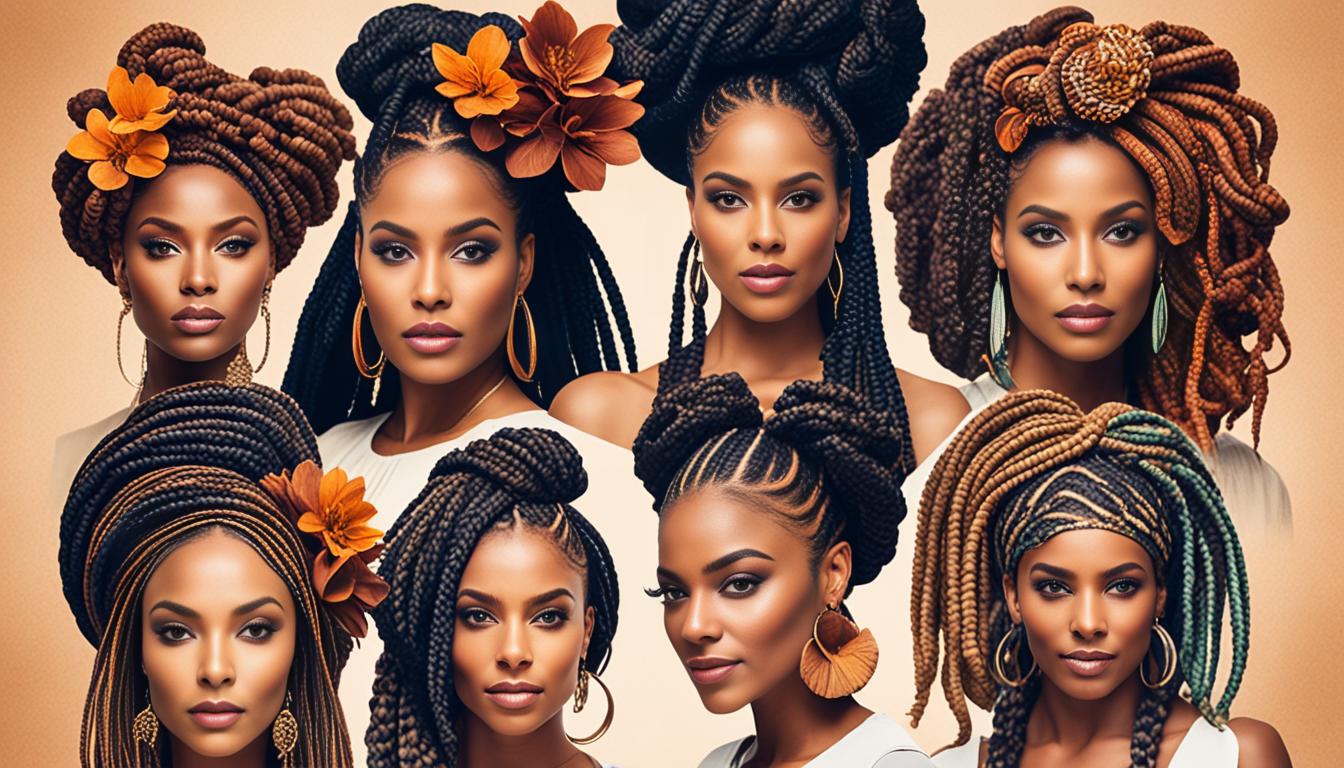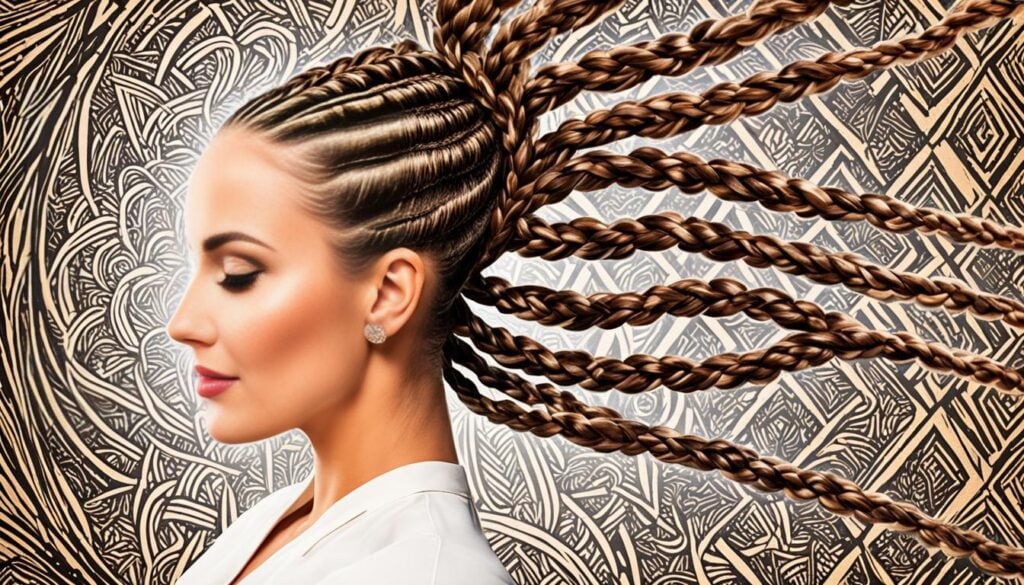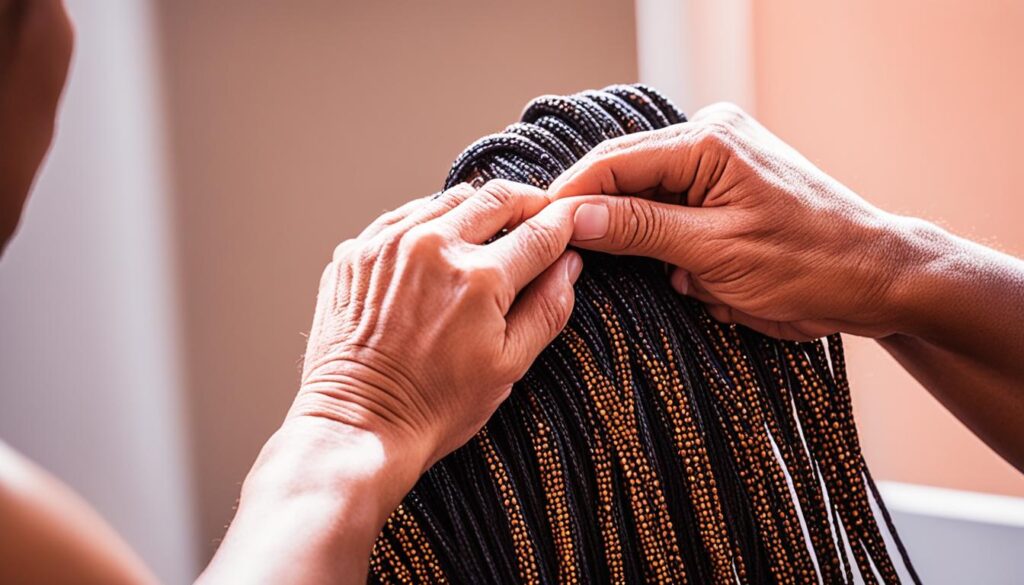
When you think of African tribal hairstyles, what comes to mind? Are braids the first thing that pops into your head? It may surprise you to learn that braiding has a long history in Africa, dating back thousands of years. But did African tribes really braid their hair? Let’s dive deeper into the cultural hair practices of Africa and uncover the fascinating truth behind this age-old question.
For centuries, African tribal hairstyles have been an essential part of the continent’s rich cultural heritage. These intricate styles are more than just a fashion statement – they are deeply rooted in tradition, identity, and social significance. So, let’s explore the historical context and cultural importance of braiding in Africa and how it has shaped and influenced hair practices to this day.
Origins of Braiding in African Culture
The origins of braids can be traced back 5000 years in African culture, specifically with the Himba people of Namibia. Braiding is deeply intertwined with African traditions and customs, and it holds immense cultural significance. For many African tribes, braided hairstyles were a unique way to identify each tribe. The patterns and styles of braids served as indicators of various aspects of a person’s life, including their tribe, age, marital status, wealth, power, and religious beliefs.
The Himba people, known for their intricate braiding traditions, have passed down this art form from one generation to the next. Braiding originated with the elders braiding their children, creating a bond and fostering the transmission of traditional styles and techniques. Through braiding, the Himba people honor their cultural heritage and maintain a strong sense of identity.
These braiding traditions have not only been practiced by the Himba people but also by numerous other African tribes, each with their distinct styles and designs. Braids have remained an integral part of African culture, serving as a form of self-expression and a celebration of the beauty and diversity of African hairstyles.
Uniqueness of Himba Braiding
The Himba people of Namibia have developed an exceptional braiding style that is highly recognizable and deeply rooted in their culture. The Himba women meticulously braid their hair, often using a combination of intricate patterns and accessories such as shells and beads. These braided hairstyles are not only visually stunning but also carry immense cultural significance. They reflect the Himba people’s heritage, spirituality, and social status within their community.
One of the most distinctive features of Himba braiding is the use of red clay mixed with butter, known as otjize, to coat the braids. This mixture not only gives the hair a reddish hue but also serves to protect and moisturize it in the arid desert climate where the Himba people reside. The application of otjize is considered a sacred and essential part of the braiding process, symbolizing beauty, health, and strength.
| Braiding Styles | Meaning |
|---|---|
| Elongated Braids | Representing the Himba people’s ancestors and linking the present generation to their roots |
| Top Knot Braids | Signifying the wearer’s marital status |
| Single Braid on the Side | Indicating a child’s age and social status |
| Complex Fishbone Braids | Demonstrating exceptional braiding skill and creativity |
| Embroidered Braids | Symbolizing the Himba people’s connection with nature and their agricultural traditions |
This table showcases a few of the distinctive braiding styles of the Himba people and the meanings associated with each style. These braids not only adorn the hair but also carry a wealth of cultural and social information within the Himba community.
https://www.youtube.com/watch?v=aLq-rdOscUk
Braiding Throughout History and Cultures
Braiding is a timeless art form that has been practiced in various cultures throughout history, showcasing the diverse and intricate ways in which hair can be styled. From ancient civilizations to modern-day trends, braids have transcended time and geography, leaving their mark on the world of fashion and self-expression.
In different eras, braiding has taken on unique forms and held cultural significance. Let’s explore some notable braiding styles and their historical contexts:
Cornrows
Cornrows, characterized by tight, narrow braids that are close to the scalp, have a rich history in Africa. Dating back to 3500 BC, cornrows were a way for African communities to showcase their heritage, social status, and artistic prowess. They played a significant role in cultural identity and continue to be popular today.
Afro Box Braids
In ancient Egypt, specifically around 3100 BC, afro box braids emerged as a prominent hairstyle. Typically created with synthetic hair extensions, these box-shaped braids offered durability and versatility. Afro box braids remain a celebrated style, adorning the heads of individuals who seek a bold and expressive look.
Halo Braid
The halo braid, also known as the crown braid, originated in ancient Greece during the first century. This ethereal hairstyle features a braided crown encircling the head, reminiscent of a halo. The halo braid continues to evoke elegance and grace, making it a beloved choice for weddings, special events, and everyday wear.
Pigtail Braids
Native American cultures introduced pigtail braids in the fifth century. These braids were often seen as a symbol of strength, beauty, and cultural heritage. Pigtail braids, with their distinctive appearance, serve as a reminder of the resilience and traditions of Native American communities.
Crown Braid
During the medieval period in Europe, from 1066 to 1485, the crown braid gained popularity. This regal hairstyle, characterized by braids intricately woven around the head, was favored by royalty and symbolized nobility. The crown braid continues to exude a sense of sophistication and elegance.
Staircase Braid
In China, from 1644 to 1912, the staircase braid became a prominent hairstyle. This unique braiding technique involved creating multiple cascading braids that resembled steps. The staircase braid reflected the traditional Chinese culture’s emphasis on harmony, balance, and intricate craftsmanship.
Modern Cornrows
In the 1970s, modern cornrows gained popularity in the Caribbean. These braids, characterized by their straight, neat lines close to the scalp, became a symbol of cultural pride and African heritage. Today, modern cornrows are celebrated for their versatility and ability to showcase intricate patterns and designs.
Braid Tutorials
The advent of YouTube in 2005 revolutionized access to hair tutorials, including various braiding techniques. With the rise of online tutorials, individuals gained the ability to learn and experiment with different braiding styles like never before. Braid tutorials have since become a valuable resource, inspiring creativity and empowering people to explore new hairstyles.
Throughout history, braiding has served as a means of self-expression, cultural identification, and artistry. From Africa to Europe, Asia to the Americas, the art of braiding continues to thrive, influencing trends and uniting diverse communities around the world.

“The intertwining of history and culture can be seen in the intricate braiding styles that have been passed down through generations.” – Hair Stylist Magazine
The Cultural Significance of Braids for African Americans
Braids have played a significant role in African American culture. They are considered go-to styles for women with natural textures and are used as a form of protective styling. During the era of slavery, braids were a form of cultural resistance, and enslaved women used them as a way to preserve their heritage and communicate messages. In the post-slavery era and during the civil rights movement, natural hairstyles, including braids, became symbols of Black pride and a rejection of Eurocentric beauty standards.
“Braids have always been a way for me to embrace my natural hair and carry on the tradition of our ancestors. It’s more than just a hairstyle; it’s a celebration of our culture and our resilience.” – Michelle Thompson, hairstylist and advocate for natural hair
The popularity of braids among African Americans can be attributed to several factors. Protective styling is one key aspect. African American hair, with its unique textures, requires extra care to maintain moisture and prevent damage. Braids provide a practical solution by minimizing manipulation and reducing exposure to harsh elements.
In addition to their practical benefits, braids hold deep cultural significance. They serve as a powerful expression of identity and a way to resist Eurocentric beauty standards that historically marginalized natural hair textures. Embracing natural hairstyles, including braids, became a way for African Americans to reclaim their heritage and challenge societal norms.
Preserving Heritage and Communicating Messages
During the era of slavery, African Americans faced immense cultural suppression. Enslaved women used braids as a means of preserving their heritage and resisting assimilation. They creatively incorporated cultural symbols and messages into their braided hairstyles, using them as a covert way to communicate with each other and express their individuality.
Despite the restrictions imposed upon them, enslaved women found solace and empowerment in their braided hairstyles. Braiding sessions provided a space for communal bonding and the passing down of cultural traditions from one generation to the next.
A Symbol of Black Pride and Resistance
In the post-slavery era and during the civil rights movement, natural hairstyles, including braids, gained renewed significance. African Americans embraced their natural hair textures and used braided styles as a statement of Black pride and identity.
Braids became a visible form of resistance against Eurocentric beauty standards that dictated straight hair as the epitome of beauty. The adoption of natural hairstyles, including braids, challenged societal notions of beauty and affirmed the unique beauty and diversity of African American hair.

The cultural significance of braids for African Americans continues to be celebrated and embraced. Braids serve as a visual representation of cultural heritage, a symbol of resilience, and a form of self-expression. They provide a platform for creativity and individuality while fostering a sense of community within the African American culture and beyond.
Evolution and Impact of Black Hair Braiding
Black hair braiding has undergone significant changes over time, influenced by shifts in fashion trends, cultural attitudes, and societal norms. From its origins in traditional African braiding to its modern-day prominence in the professional braiding industry, this art form has traversed through centuries, adapting to changing times and socio-political landscapes.
During the slavery era, Black individuals brought with them the traditions of traditional African braiding styles through the transatlantic slave trade. Braids served as more than just a form of adornment; they became symbols of cultural resistance and strength in the face of oppression. Despite the hardships they encountered, enslaved individuals utilized braids as a powerful means of preserving their cultural heritage.
Following the abolition of slavery, Black individuals embraced natural hairstyles, including braids, as a way to reclaim their identity and assert their independence. Braids became a symbol of pride and empowerment, a rejection of Eurocentric beauty standards that had been imposed upon them for centuries. This post-slavery era marked the beginning of a cultural movement that celebrated Black hair and its unique textures.
As the demand for braiding services grew, the professional braiding industry emerged, providing specialized services and economic opportunities for Black hair braiders. The industry not only catered to the styling needs of the Black community but also fostered a sense of community and empowerment. Braiders honed their skills, developed new techniques, and gained recognition for their artistry, contributing to the preservation and evolution of braiding traditions.
In recent years, social media platforms have played a significant role in the popularization of diverse braiding techniques and styles. Influencers and enthusiasts showcase their creativity and share tutorials, inspiring others to experiment with different braiding patterns and designs. The online community has created a space for education, collaboration, and celebration of Black hair, further amplifying the influence and reach of Black hair braiding.
Conclusion
Black hair braiding holds immense cultural and historical significance, deeply rooted in African culture and traditions. It is a powerful form of self-expression, allowing individuals to showcase their heritage, style, and creativity. Braiding offers a sense of cultural pride and a means of resisting Eurocentric beauty standards that have historically marginalized Black individuals.
Over time, Black hair braiding has evolved and adapted, gaining mainstream recognition and influence as a symbol of diversity and cultural richness. It has transcended its African roots and become a global fashion statement, inspiring people from all backgrounds to explore and appreciate the beauty and artistry of braided hairstyles.
Furthermore, Black hair braiding has created a strong sense of community within the Black community and beyond. It fosters connection, solidarity, and a shared appreciation for Black culture. Through the exchange of braiding techniques, tips, and experiences, individuals have formed online communities, creating spaces where they can support, inspire, and uplift each other.
As we celebrate the cultural significance of Black hair braiding, it is important to appreciate the rich heritage it represents and respect its origins. By embracing and promoting diverse hairstyles, we can continue to empower individuals, break stereotypes, and foster inclusivity in our society.






